Last Updated on June 4, 2024
The Friday the 13th episode of WTF Happened to This Horror Movie? was Written by Cody Hamman, Narrated by Jason Hewlett, Edited by Tyler Nichols, Produced by Lance Vlcek and John Fallon, and Executive Produced by Berge Garabedian.
When director Sean S. Cunningham set out to make the original Friday the 13th (watch it HERE), he was trying to craft a cinematic rollercoaster ride. He wanted the audience to have fun while being scared. He hoped they would jump and laugh, and be shocked by the gory murders. And he was very successful at what he set out to do. His little independent production was such a crowd-pleasing thrill ride, it became one of the biggest hits of 1980. And spawned a franchise that is still going on to this day. So let’s celebrate Friday the 13th by looking back and figuring out What the F*ck Happened to This Horror Movie.
Cunningham first got into the horror genre by producing Wes Craven’s 1972 feature debut The Last House on the Left. The film did well, but the negative responses to it were very personal, questioning the filmmakers’ sanity and morals. So Cunningham and Craven spent most of the decade trying to avoid returning to horror. Craven folded first, making The Hills Have Eyes in 1977. But Cunningham had the chance to do something different. For Last House distributor Hallmark Releasing, he directed two Bad News Bears rip-offs. The Little League baseball movie Here Come the Tigers and the soccer movie Manny’s Orphans. Let’s just say that they did not replicate the success of The Bad News Bears. Then the low budget, independently produced slasher Halloween did huge box office numbers in the fall of 1978. And Cunningham saw there was a good reason to give horror another try. But his second horror movie wasn’t going to have the same tone as The Last House on the Left. That was a very raw and painful movie that brought the feel of real tragedies to the screen. This time he wanted to make something that would be fun for the audience to experience.
In the early months of 1979, Cunningham asked Here Come the Tigers and Manny’s Orphans writer Victor Miller to come up with something along the lines of Halloween. The two would meet every morning to go over the details. As Cunningham told Crystal Lake Memories author Peter Bracke, the idea was to set the story in a remote location and put a lot of young people in jeopardy. He said, “Then we went down the list: are they in jeopardy from a real force or an imaginative one? Who’s going to survive, if anyone? Locations were kicked around, too. How about an apartment building, or a funhouse, or an amusement park, or an island off the coast of Spain?” Miller also considered setting the story in a high school. Then he thought of a place he had been afraid of in his own childhood: summer camp. Miller pitched the idea of setting the story at a summer camp before it opens, so they wouldn’t have to bring in a bunch of young extras to play campers. Cunningham loved the idea, so Miller wrote up the script.
Miller’s script establishes that Camp Crystal Lake is a place that has seen so much bad luck over the years, it has earned the nickname Camp Blood. A young boy drowned there in 1957. The following year, two counselors were murdered by an unknown assailant – and we see those murders in the film’s opening sequence. The camp closed down after that, and every attempt to reopen it has been met with sabotage. The water was bad. There were mysterious fires on the property. But now Steve Christy, the son of the camp’s owners, has decided to give the place another try. He sinks a lot of money into fixing it up. He hires the counselors, who gather together at the camp before opening day. And on Friday, June 13th someone starts picking them off one-by-one. Someone who wants to make sure the camp stays closed. In the end, the final surviving counselor finds out who the killer is. Mrs. Voorhees, who used to be the cook at the camp, until her son drowned there in 1957. His name was Jason. Mrs. Voorhees blamed the counselors for her son’s death. Driven insane by the loss of her child, she has been killing people and sabotaging the camp to avenge him.
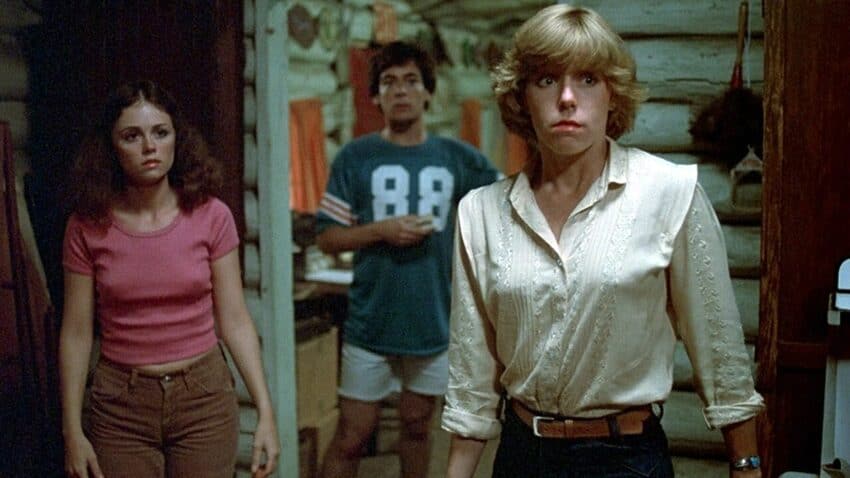
The title on Miller’s script was Long Night at Camp Blood. But Cunningham had a different title in mind. In the July 4th edition of Variety, he took out a full page ad announcing that he was going to be making a movie called Friday the 13th. The ad promised this would be the most terrifying film ever made. He couldn’t believe that nobody else had used the title Friday the 13th before. He fully expected to hear that he couldn’t use the title because it was already taken… and in fact, there was a movie set for a November 1979 release called Friday the 13th: The Orphan. But the makers of that movie were easily dealt with, and it didn’t get much attention when it was released anyway. So the path was clear for Cunningham to make his own Friday the 13th. Most of the responses he got about the ad were distribution queries and offers from investors. Which he needed, because he had a budget of five hundred thousand dollars in mind. After working with Hallmark Releasing on The Last House on the Left, Here Come the Tigers, and Manny’s Orphans, he wasn’t interested in working with them anymore. But they offered to put one hundred and twenty-five thousand dollars into the movie. And after they read the script, they wanted to cover the entire budget. So Cunningham was back in business with them – and they’re credited on the film as Georgetown Productions. The three men behind Georgetown – Phil Scuderi, Steve Minasian, Robert Barsamian – would continue to be involved with the Friday the 13th franchise as the decades went on.
It was Scuderi who hired a writer named Ron Kurz to polish the script and add in more humor. The biggest example of Kurz adding comic relief is the scene where the counselors are visited by a cop on a motorcycle. A tough-talking character who is clearly inept. Miller was appalled by the addition of this scene because, as he said, “The entire point was to create an environment in which there was no way these kids could get any help from the outside.” And here they were being visited by a police officer. But one gets the impression that Officer Dorf wouldn’t be able to help even if he caught Mrs. Voorhees red handed. As the story progresses and the body count rises, there’s a fake-out involving another police officer. Steve Christy has gone to town for supplies and doesn’t know that his counselors are being murdered back at camp. When his Jeep goes off the road in a storm, he has to catch a ride back to camp with the helpful Sergeant Tierney. The counselors are trapped at the camp with no way to reach the outside world – the phone line has been cut, the only vehicle tampered with. So the fact that Steve is with Tierney gives the audience hope. When the police officer arrives at the camp, he’ll stop the killing, right? But that’s not how it goes. Tierney is called to an accident scene and has to drop Steve off before they reach the camp. Hope speeds away in the opposite direction.
While Friday the 13th was chasing the success of Halloween, there was another horror movie that had some influence on it. Hallmark had handled the U.S. release of the 1971 Italian giallo film A Bay of Blood, which was directed by Mario Bava and is also known as Twitch of the Death Nerve. That film features several gory murders, a few of which are quite similar to murders depicted in the first two Friday the 13th movies. Twitch of the Death Nerve had done very well for Hallmark, showing at drive-ins and grindhouse theatres. Someone involved with the production of Friday the 13th felt that Cunningham’s cinematic thrill ride would benefit from showing bloody kills along the lines of those in Bava’s movie. And they knew who could provide gore that would blow the audience away. Special effects artist Tom Savini, who had just provided the gut-munching and head explosions for George A. Romero’s Dawn of the Dead. Almost twenty thousand dollars of the Friday the 13th budget went toward the creation of Savini’s effects. When crafting the script, Cunningham and Miller had decided that all of the murders should be committed with bladed weapons. The kills had to be personal, hand-to-hand. No guns, that would be too impersonal. Savini, who sees gore effects as bloody magic tricks, did an incredible job of making those kills work on the screen. The kills are gross and shocking, but the effects are fascinating to look at.
Over the years, it has been suggested that slasher movies are morality plays. That the murders are punishment for characters who have sex or do drugs. That wasn’t on Cunningham’s mind when he was making Friday the 13th. To him, the movie was about untimely, unwarranted death. The characters aren’t killed because they did anything wrong. They’re at Camp Crystal Lake, they’re going to die no matter what they do. As Cunningham said, the idea was to show that “there is a hostile world out there that wants to destroy you”, there’s no rhyme or reason to it.
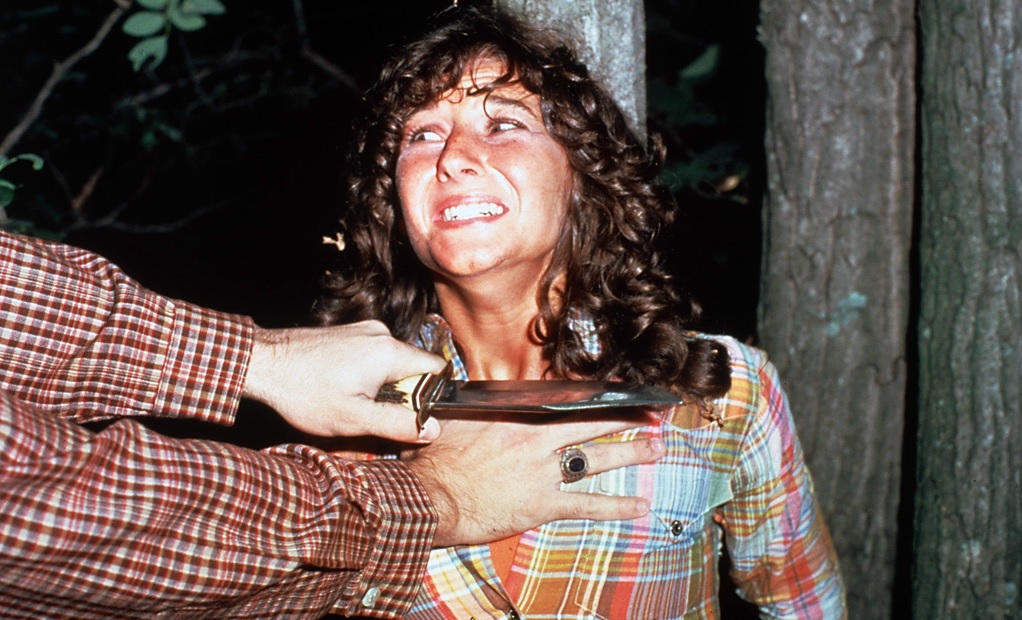
By making a contribution to the Boy Scouts of America, the production was able to secure a Boy Scout Camp in New Jersey as the primary filming location. And on September 4, 1979, seven weeks of filming began. Cunningham was able to assemble a solid cast of New York-based actors to bring the characters to life. The idea being that he wanted people who looked like real kid-next-door types. The ill-fated counselors in the film are played by Mark Nelson, Laurie Bartram, Jeannine Taylor, Debra S. Hayes, Bing Crosby’s son Harry Crosby, future A-lister Kevin Bacon, and Willie Adams, who was also a production assistant. Robbi Morgan plays a counselor who looks like she could turn out to be the survivor. Then she gets knocked off early on, like Janet Leigh in Psycho. Peter Brouwer, who was dating the assistant director, was cast as Steve Christy. Cunningham considered playing Officer Dorf himself, but ended up casting Ron Millkie. Even though he clearly couldn’t ride a motorcycle. Ronn Carroll was cast as Sergeant Tierney. Rex Everhart plays a truck driver who believes Camp Crystal Lake is jinxed. Walt Gorney plays a character known as Crazy Ralph, who warns that the camp has a death curse. Cunningham wasn’t sure about including the Crazy Ralph character, but he turned out to be a fan favorite.
Fingers were crossed that they would be able to get a known name like Sally Field or Meryl Streep to play the survivor, Alice. But that was a pipe dream. The role went to another New York-based unknown, Adrienne King. Who proved to be quite capable of playing a terrified young woman who is forced to take violent action against an attacker. And Cunningham was able to get a well-known name to play the attacker, Mrs. Voorhees. His first choice was Estelle Parsons, who had won an Oscar for her role in Bonnie and Clyde. That didn’t work out because Parsons wanted a percentage of the profit. So he made an offer to Betsy Palmer. Palmer had a screen acting career that went back to the early 1950s, and was a household name due to her many appearances as a celebrity panelist on game shows. The role of Mrs. Voorhees was the opposite of what Palmer was known for. No one would have expected her to play a character like this. And she wouldn’t have, if she didn’t need a new car at the time. She needed about ten thousand dollars to buy the car she wanted. And Friday the 13th would pay her a thousand dollars a day for ten days of work. It was the perfect deal. And Palmer was so perfect in the role, most people today remember her as Mrs. Voorhees more than any other character she played.
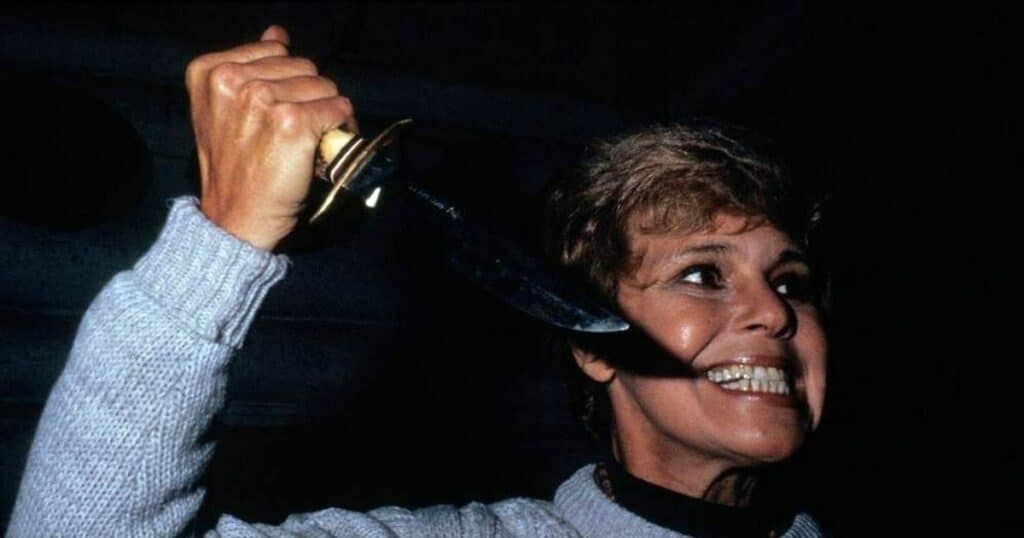
Mrs. Voorhees doesn’t show up until the end of the film. The character is never even directly mentioned until she introduces herself to Alice. Which makes it impossible for viewers to guess who’s doing the killing. Palmer pointed out to Cunningham that he wasn’t playing fair with the mystery. She said, “You’re not even giving anybody a loose clue that I’m on the scene. They should at least have a glimpse of this woman somewhere earlier in the film. You should put me in that little diner Steve Christy visits, or at a stoplight in my Jeep. Whatever, just a flash somewhere.” But Cunningham wasn’t interested in providing clues earlier in the movie.
It has been said that working on Friday the 13th was really like going to summer camp. They were working in a beautiful, although sometimes creepy, location. There was a joking, carefree atmosphere on the set. But that doesn’t mean everything went smoothly. The production ran into some money issues. Cinematographer Barry Abrams begged to have more lights to use, but they didn’t have the money to buy more lights. So once night falls in the movie, it is quite dark. They couldn’t afford stunt doubles for King and Palmer, so the actors had to perform all of their fights themselves. Savini doubled for Bartram in a moment where her character’s corpse is tossed through a window. Crosby was temporarily blinded by a chemical used in the fake blood mix. A real snake was killed for the scene where a snake is found in Alice’s cabin. A scene that was written to show that the counselors could use violence to defend themselves, if necessary. Which it turns out to be. The opening sequence showing the murder of two counselors in 1958 was supposed to be bigger. It was going to take place outside and include a chase around the boathouse. But when it started snowing and the generator died, they had to film the whole scene inside a barn that had its own power source.
It took three tries to film the most famous scene in the movie. The climactic jump scare, which was included because the jump scare ending of Carrie had been so popular a few years earlier. It’s a scene that Victor Miller, Ron Kurz, and Tom Savini all separately take credit for coming up with. The scene where Alice is drifting along in a canoe the morning after defeating Mrs. Voorhees… and Mrs. Voorhees’ son Jason, who drowned over twenty years earlier, bursts out of the water. Grabbing Alice, tipping the canoe, pulling her into the water with him. There’s also disagreement over who deserves credit for Jason’s appearance. Miller had only vaguely implied that the child might have been mentally impaired. Kurz said he was the one who suggested Jason should have physical deformities as well. Savini says it was his idea. And there is no question that Savini was the one who created the makeup effect that was worn by actor Ari Lehman. Cunningham had considered casting his own son Noel Cunningham as Jason. But his wife didn’t want their son to spend so much time in that cold water. So he cast Lehman, who had worked for him on Manny’s Orphans.
That jump scare, presumably a nightmare, was the perfect way to end the onslaught of shocks and thrills Cunningham put together. And the film’s effectiveness was greatly enhanced when paired with the score composed by Cunningham’s old friend Harry Manfredini. Manfredini only had enough money to record the music in a friend’s basement with thirteen instrument players. But he turned in one of horror’s great, iconic scores. And one of its most popular sound effects. Manfredini wanted to create a specific sound to put in the film anytime the killer was present. Letting the viewer know the characters were in danger in that moment. Inspiration came from a scene where Mrs. Voorhees is shown to be talking to herself in Jason’s voice, saying “Kill her, mommy.” Manfredini spoke the first sounds of the words Kill and Mommy into a microphone and ran it through an echo reverberation machine. Ending up with that iconic sound, “ki ki ki ma ma ma,” that has been used throughout the franchise.
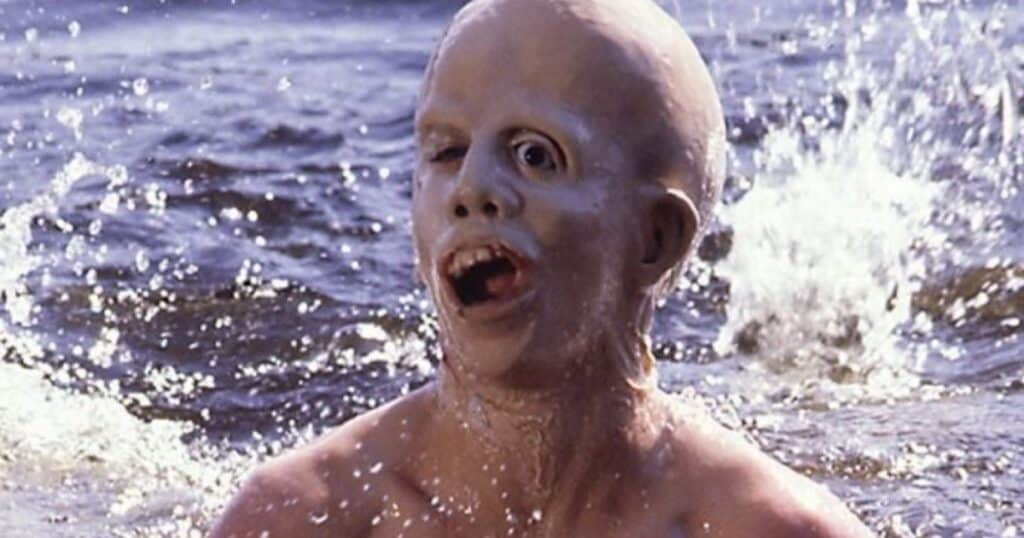
A franchise that happened because this little independent production managed to get major studio distribution. When Cunningham screened Friday the 13th for the Hollywood studios, a bidding war broke out between Paramount, Warner Bros., MGM, and United Artists. Paramount, which was looking for independent acquisitions to fill in spaces in their release slate, won the domestic distribution rights with a bid of one-point-five million. Warner Bros. landed the international rights. A marketing campaign was put together that focused on the film’s shocking murders. Murders which made it to the screen largely intact. While future entries in the series would be forced to remove bloodshed by the motion picture ratings board, this one scraped by with only nine seconds having to be cut to secure an R rating. Sensing that there could be a very enthusiastic audience for this film, Paramount decided to give it a wide release. It reached one thousand, one hundred and twenty-seven screens in the United States on May 9th, 1980… and it was a huge hit. A five-point-eight million dollar opening weekend was the first step on the way to the film earning almost forty million at the global box office. Over fourteen million tickets to Friday the 13th were sold in 1980. It was the seventeenth highest grossing film of the year. The second highest money-maker of the summer, behind only the Star Wars sequel The Empire Strikes Back.
It’s easy to see why Friday the 13th was such a box office draw. Cunningham and his collaborators had managed to make a deeply unnerving film. The low budget actually resulted in the movie having sort of a documentary feel to it. It seems like we’re really just hanging out with the characters at Crystal Lake. Getting to know them and like them. And then they’re brutally taken out. The darkness the cinematographer wanted to lighten up works to the film’s benefit, making it even creepier. You can feel that the counselors are completely isolated from the outside world. Alone in the middle of nowhere. No one’s coming to help them. And this unhinged woman, who none of them had heard of other than Steve, wants to murder them for something they had nothing to do with. Friday the 13th is often written off as nothing but a Halloween cash-in. Or overshadowed by the franchise it spawned. It doesn’t get as much respect as it deserves, being a classic in its own right. There’s a reason it made so much money: it’s a great horror movie. A crowd pleaser. A rollercoaster, just like Cunningham intended.
With all of the success came backlash from people who found this type of entertainment to be repugnant. The Catholic League of Decency condemned the film. It was named a Video Nasty in the United Kingdom. Some critics were appalled, with Gene Siskel going so far as to spoil the ending in his review. And then encourage the outraged public to send letters to Paramount and Betsy Palmer shaming them for being involved with Friday the 13th. He provided information on how to reach them. Luckily, he gave the wrong address for Palmer, so she didn’t see many letters about it. Later in the year, Siskel and Roger Ebert dedicated an episode of their TV show to discussing films like Friday the 13th. With Siskel suggesting they should be outlawed like bullfights. Of course, seeing people like Siskel and Ebert freak out over the movie just made the public want to go watch it even more.
Friday the 13th raked in so much cash over the summer of 1980, a sequel was soon on the fast track to be released in May of 1981. Second unit director Steve Miner stepped up to take the helm of Friday the 13th Part 2, working from a screenplay by Ron Kurz. The problem was, they had to figure out who would be doing the killing, since Mrs. Voorhees hadn’t made it to the end of the first film. Georgetown Productions’ Phil Scuderi knew exactly who the killer should be. His name was Jason… and we know how that turned out, as Jason would return for many more sequels and even make a trip to Elm Street.
A couple of the previous episodes of the show can be seen below. To see more, head over to our JoBlo Horror Originals YouTube channel – and subscribe while you’re there!
What do you think of the original Friday the 13th? Let us know by leaving a comment!






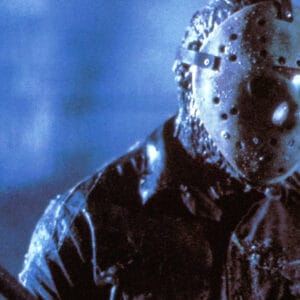

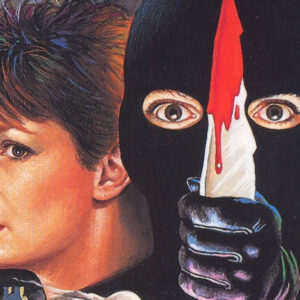






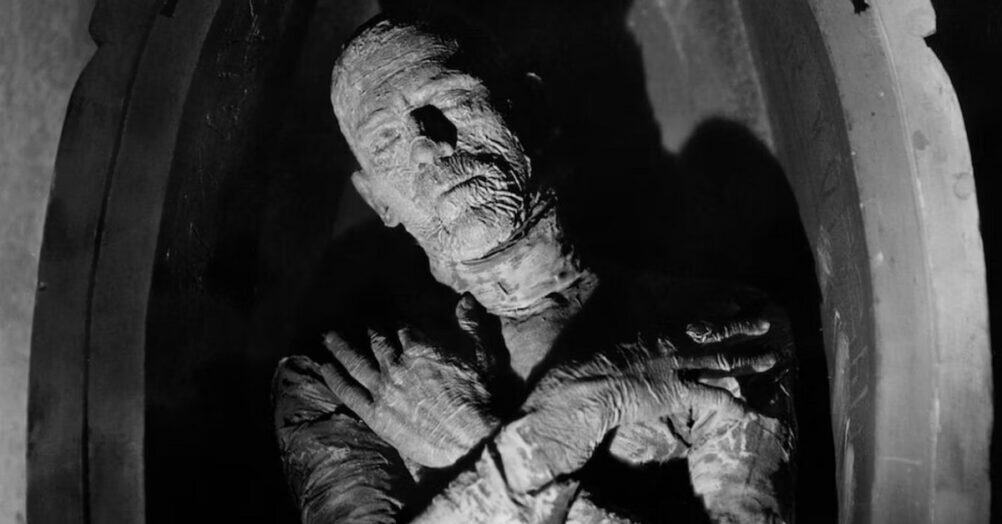
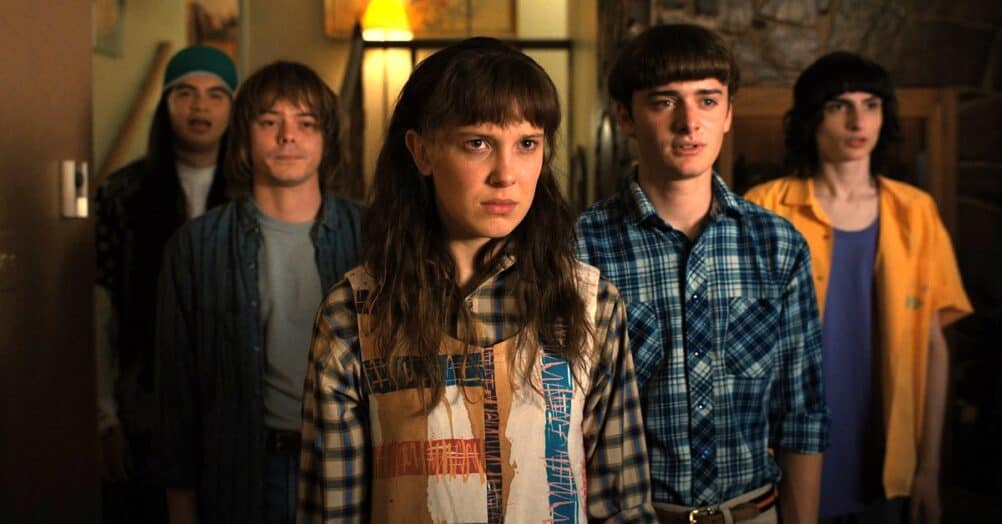

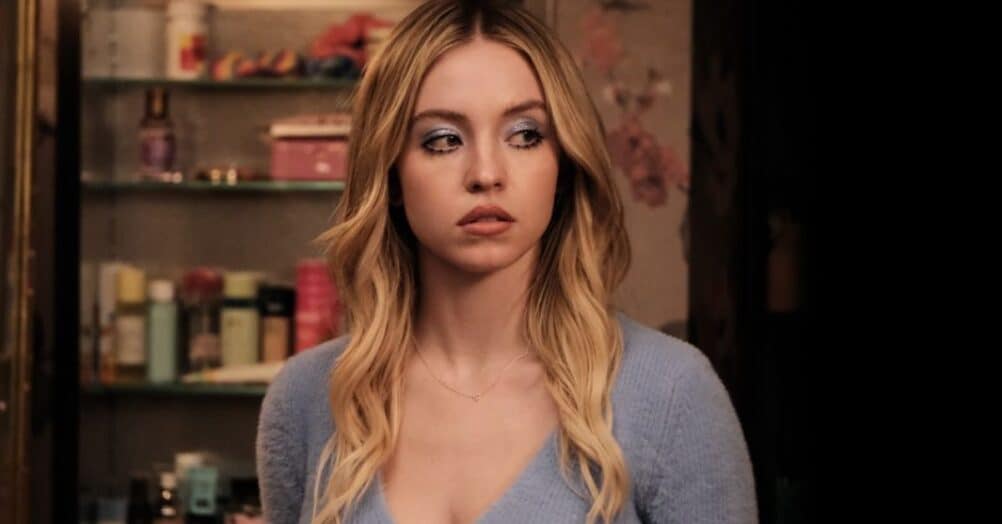

Follow the JOBLO MOVIE NETWORK
Follow us on YOUTUBE
Follow ARROW IN THE HEAD
Follow AITH on YOUTUBE